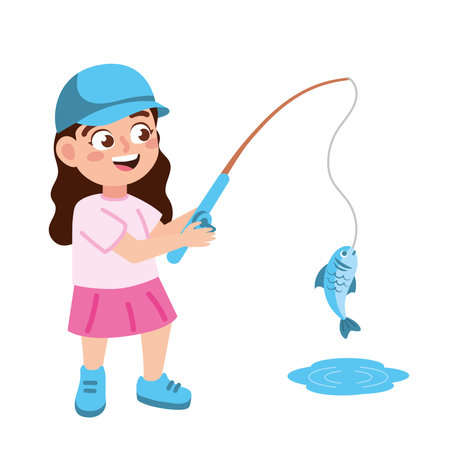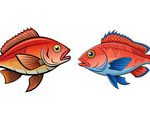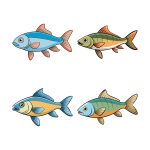1. Choosing the Wrong Line Type
One of the most common mistakes new anglers make is choosing the wrong type of fishing line. With so many options on the market, its easy to grab the first spool you see at the tackle shop—but not all lines are created equal. The three main types—monofilament, fluorocarbon, and braided—each have unique strengths and weaknesses. Picking the right one depends on your target species, water conditions, and fishing technique.
Understanding the Basics
Heres a quick breakdown of each line type:
| Line Type | Main Features | Best Use Cases |
|---|---|---|
| Monofilament | Stretchy, affordable, easy to handle, floats on water | Topwater fishing, beginners, freshwater fishing |
| Fluorocarbon | Low visibility underwater, more abrasion-resistant, sinks | Clear water, finesse techniques, leaders for tough fish |
| Braided | No stretch, ultra-strong, great sensitivity, thin diameter | Heavy cover areas, long casts, deep water fishing |
Why It Matters
Selecting the wrong line can lead to missed strikes, lost fish, or tangled messes. For example, using braided line in super-clear water might spook wary bass. On the other hand, trying to pull a big catfish out of heavy cover with monofilament could result in a snapped line. Each line type interacts differently with your rod action and bait presentation.
Tips for Choosing the Right Line:
- Know Your Target Species: Some fish are line-shy and require low-visibility fluorocarbon.
- Consider the Environment: Fishing around rocks or thick vegetation? Braided line offers extra strength and durability.
- Match Your Technique: If youre using topwater lures, monofilament’s buoyancy gives better results.
The Bottom Line (Pun Intended!)
If you’re just starting out and not sure which way to go, monofilament is a solid all-around choice. As you gain experience and start targeting specific species or fishing different environments, mix in some fluorocarbon or braid where appropriate. Understanding your options is key to avoiding one of the most common fishing line fails.
2. Ignoring Line Weight Recommendations
One of the most common mistakes new anglers make is ignoring the recommended line weight for their rod and reel setup. This may not seem like a big deal at first, but using the wrong line weight can seriously affect your casting distance, accuracy, and even your chances of landing a fish.
Why Line Weight Matters
Every fishing rod comes with a recommended line weight range printed near the handle. This range is carefully designed to match the rods action and power. If you go too light or too heavy, youre not only risking poor performance, but also potential damage to your gear.
Common Issues from Mismatched Line Weight
| Problem | Cause | Result |
|---|---|---|
| Poor Casting Distance | Line too heavy for rod | Short, inaccurate casts |
| Frequent Break-Offs | Line too light for target species | Fish breaks off during fight |
| Rod Damage | Line exceeds rods max rating | Rod blank may crack or snap |
How to Match Line Weight Correctly
If your rod says its rated for 6–12 lb test line, stick within that range. Match your reel as well—most spinning reels have a suggested line capacity label. And always consider the type of fish youre targeting. You wouldn’t use 6 lb line when going after 20 lb catfish!
Quick Tips:
- Check the line weight rating on your rod and reel before spooling new line.
- Use lighter lines for finesse fishing and smaller species like trout or panfish.
- Select heavier lines for bigger game fish like bass, pike, or saltwater species.
Getting this right means smoother casts, fewer lost fish, and better overall performance on the water.
![]()
3. Neglecting Line Maintenance
One of the most common mistakes beginner anglers make is forgetting that fishing line needs regular care. Just like your rod and reel, your line goes through a lot each time you cast, reel in, or battle a fish. Without proper maintenance, you’re risking weak spots, tangles, memory coils, and even losing a big catch.
Why Line Maintenance Matters
Your fishing line is the only connection between you and the fish. Even if youve picked the perfect type of line for your setup, it won’t perform well if its worn out or dirty. UV rays from the sun, saltwater, dirt, and even time can all weaken your line over time.
Key Maintenance Steps
To keep your line in top shape, make these three steps part of your routine:
| Maintenance Task | Why It’s Important | How Often |
|---|---|---|
| Inspect Your Line | Check for frays, nicks, or discoloration that can cause breakage during a fight. | Before every trip |
| Clean Your Line | Dirt and salt buildup can degrade performance and shorten lifespan. | After every saltwater trip or monthly for freshwater use |
| Replace Old Line | Aged or overused line loses strength and flexibility. | Every 6-12 months depending on usage |
Signs You Need to Replace Your Line
- Curling or memory coils that don’t straighten out
- Brittle texture or stiffness when handling the line
- Kinks or frequent tangles during casting
Quick Tip:
If you’re not sure when you last changed your line—go ahead and replace it. It’s better to be safe than sorry when that trophy bass hits!
4. Improper Line Storage
One of the most overlooked mistakes new anglers make is not storing their fishing line properly. Even if you’ve chosen the right type and strength, poor storage can weaken your line before you even hit the water. Heat, sunlight, and moisture are your fishing line’s worst enemies—and they’re more common than you think.
How Environmental Factors Affect Your Line
Your fishing line might look tough, but it’s surprisingly sensitive to its surroundings. Here’s how different elements can damage your line over time:
| Factor | Effect on Fishing Line |
|---|---|
| Heat | Can cause the line to become brittle and lose flexibility |
| Sunlight (UV rays) | Breaks down line strength, especially monofilament and fluorocarbon |
| Moisture | Encourages mold or mildew on stored spools, especially in humid areas |
| Dust/Dirt | Can create micro-abrasions on the line surface |
Proper Storage at Home
If you store your gear in a garage, shed, or basement, temperature swings and humidity can shorten your line’s lifespan. Instead, follow these tips:
- Keep spools in a cool, dry place—preferably indoors away from direct sunlight.
- Use sealed containers or ziplock bags to keep out moisture and dust.
- If possible, store unused spools in their original packaging for added protection.
Storing Line While You’re Out Fishing
You also need to protect your fishing line while youre on the water. Here’s how:
- Avoid leaving your rod in direct sunlight for long periods when not in use.
- Don’t leave extra spools sitting exposed in your boat or tackle box—store them in shaded compartments or inside a tackle bag.
- If your reel gets wet during a trip, dry it thoroughly before storing it to prevent moisture damage.
Pro Tip:
If you fish frequently in hot climates like Florida or Arizona, consider changing your mainline more often—even high-quality lines degrade faster under intense sun exposure.
5. Skipping Knots and Connections Best Practices
One of the most common reasons fishing lines fail—especially for beginners—is due to poorly tied knots or mismatched connections between the main line and the leader. These weak links in your setup can cause heartbreak when you lose a fish or break off during a cast. The good news? A little knot know-how goes a long way.
Why Knots Matter
Your knot is the only thing connecting you to your catch. If it’s not tied correctly, even the strongest line won’t save you. Tension, abrasion, and sudden jerks from a fighting fish can all expose a bad knot. Plus, using the wrong type of knot for your line material—like tying a mono-style knot on braided line—can lead to slippage or breakage.
Common Knot Mistakes
| Mistake | What Happens |
|---|---|
| Not moistening the knot before tightening | Friction weakens the line and causes breakage |
| Tying incompatible knots for line type | Knot may slip or come undone under pressure |
| Leaving tag ends too short | Knot may unravel over time |
| Tightening knots unevenly | Kinks form, reducing line strength |
Knot Types That Work
Certain knots are better suited for specific types of lines:
| Knot Name | Best For |
|---|---|
| Improved Clinch Knot | Monofilament & Fluorocarbon mainline hooks/lures |
| Palfomar Knot | Braided lines to hooks/lures |
| Uni-to-Uni Knot | Braid to fluorocarbon/mono leader connection |
| FG Knot | Slim profile connection from braid to leader for casting distance and strength |
Knot-Tying Tips for Beginners
A Quick Test You Can Do
Tie your preferred knot, then pull steadily on both ends. If it slips, deforms, or breaks before reaching the expected pound-test rating of your line, its time to re-tie or choose another knot.
6. Overlooking Water and Weather Conditions
Many beginner anglers underestimate just how much water and weather conditions can impact the performance of their fishing line. Choosing the right line isn’t just about strength or brand—its also about how well it matches the environment youre fishing in.
How Water Clarity Affects Line Visibility
Water clarity plays a huge role in whether fish can see your line. In crystal-clear water, a thick, brightly colored line can easily spook fish. On the flip side, in murky or stained waters, visibility is less of an issue, so you can get away with heavier or more visible lines.
Recommended Line Types by Water Clarity
| Water Clarity | Recommended Line Type | Line Color |
|---|---|---|
| Clear | Fluorocarbon | Clear or Low-Vis Green |
| Slightly Stained | Monofilament | Green or Blue |
| Muddy/Dark | Braided Line | High-Vis Yellow or Orange (for angler visibility) |
The Impact of Water Current and Depth
Fast-moving water puts more pressure on your line and tackle. If youre using a light monofilament in strong current, you might lose fish due to breakage or drag. Deeper water also means more stretch in monofilament lines, which can reduce sensitivity.
- For fast currents: Choose low-stretch braided line for better control.
- For deep water: Fluorocarbon offers good sensitivity and sinks faster than mono.
Dont Ignore Temperature Changes
Temperature affects both the water and your fishing line. Cold temps can make monofilament stiff and brittle, while extreme heat may weaken certain lines over time. Braided lines generally handle temperature swings better but still need proper care.
Quick Tips for Adjusting Based on Weather:
- In cold weather: Warm up your reel indoors before heading out.
- In hot weather: Store your gear out of direct sunlight when not in use.
By paying attention to how water clarity, current, and temperature affect your line’s behavior, you’ll make smarter choices that lead to more hookups—and fewer disappointments on the water.


